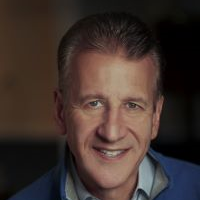How Do Employee Engagement Strategies Combat Quiet Quitting?
How Do Employee Engagement Strategies Combat Quiet Quitting?
Guest writer Ed Wallace returns this week with a blog post on building the kind of environment that fosters employee satisfaction in, “How Do Employee Engagement Strategies Combat Quiet Quitting?”
The term “quiet quitting” describes the phenomenon whereby employees become disengaged and disinterested in their work, but instead of leaving the company, they work less productively. One of the best ways to counter quiet quitting is by implementing employee engagement strategies. According to a recent Gallup poll, “quiet quitters” make up at least 50% of the U.S. workforce. In addition, the ratio of engaged to actively disengaged employees is now 1.8 to 1, the lowest in almost a decade.
Quiet quitting is a significant challenge for leaders, as it can cause long-term damage to company culture, morale, and business outcomes. Read on to learn about employee engagement best practices.
What is Employee Engagement?
Employee engagement is the level of commitment an individual has to their work and the company they work for.
Countering quiet quitting requires an initiative-taking approach to employee engagement, which can help to boost motivation, job satisfaction, and productivity.
Engaged employees are more likely to be enthusiastic about their work, more committed to their employers, and more willing to go the extra mile to achieve company goals. This is crucial because it can impact employee retention, customer satisfaction, and business performance. Companies with the highest rates of employee engagement are 21% more profitable and 17% more productive than those with a more disengaged staff.
How to Use Employee Engagement to Increase Motivation.
To combat quiet quitting, business leaders must invest in employee engagement best practices. Here’s how.
Cultivate a Positive Company Culture
Company culture is the attitude or environment within an organization. Businesses with positive cultures value diversity, inclusivity, open communication, encourage collaboration, and have higher rates of employee satisfaction. They also ensure employees don’t feel like they don’t matter or are replaceable.
Positive company culture is one of the most critical employee engagement strategies because it helps employees feel more connected to their work, team, and the company’s mission.
Promote Employee Well-Being
Workplace initiatives, such as wellness programs, flexible working arrangements, health screenings, and mental health resources show employees that their well-being is a priority. In addition, a more positive environment that rewards employees who perform well can help reduce burnout and anxiety. When they feel supported and cared for, they are more likely to be motivated and engaged at work.
Provide Growth Opportunities
Providing growth opportunities is one of the key employee engagement best practices. When employees see a future for themselves within their company, they are more likely to stay engaged and motivated. Invest in employee training and development opportunities to inspire them to learn new skills, take on challenges, and progress in their careers.
Foster Meaningful Relationships
Strong relationships among team members create a more supportive and collaborative work environment. When employees feel personally connected to their colleagues, they are more likely to be engaged and more committed and loyal to their work and team.
Recognize and Reward Employee Contributions
Rewarding employee contributions is among the top employee engagement best practices. Acknowledging splendid work also boosts morale, increases confidence, and encourages employees to perform their best.
Employee Engagement Examples.
Here are some tangible actions to boost employee engagement within your organization.
Conduct a Survey
An anonymous employee survey helps you gauge your baseline. You can structure the survey with a rating scale, open-ended questions, or multiple-choice questions. Consider topics such as employee and management interaction and overall company mission. The survey results will help you identify areas that require the biggest boost.
Pay Employees to Volunteer
Paying employees to volunteer shows them that your company has a greater purpose beyond its bottom line and is making a positive contribution to society. Choose nonprofit organizations that align with your company’s mission and area of focus such as homelessness, books for underserved kids, or veterans.
Create a Mentoring Program
Mentorship supports employees as they progress in their careers by supporting them so they can identify their goals and overcome challenges. They also provide guidance and are particularly beneficial for underrepresented groups. A study from the University of California Haas School of Business found that mentoring programs are especially important for young women.
To design a mentoring program, create a clear structure that addresses key components such as how long it will last and how mentees will connect with and pair with their mentors. Lastly, provide an opportunity for mentors and mentees to give insight into their experience.
The Bottom Line: How to Use Employee Engagement to Increase Motivation.
Business leaders must prioritize employee well-being, foster positive company culture, provide development opportunities, foster meaningful relationships, and recognize and reward employee contributions. By implementing these strategies, leaders can create a more engaging and supportive workplace, ultimately improving employee retention, productivity, and overall enterprise success.


